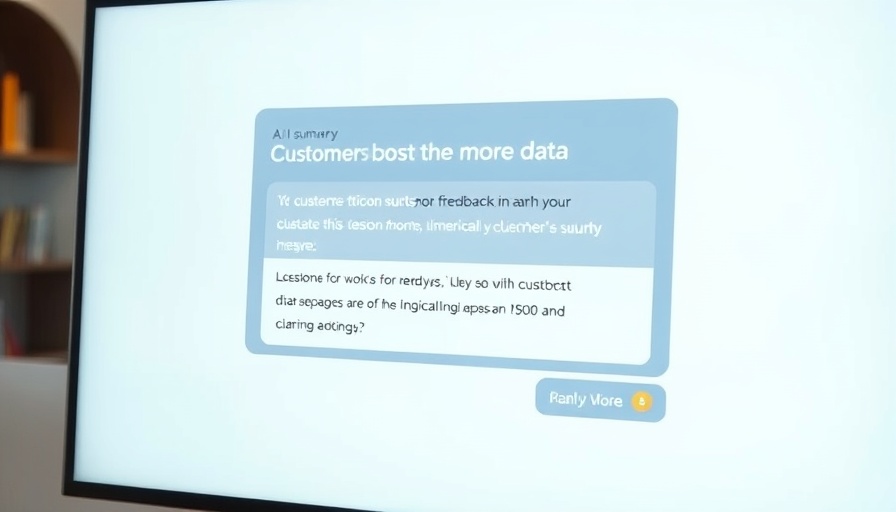
Understanding the Fast-Paced Fulfillment Landscape
In our modern retail environment, the race for faster delivery demands isn't slowing down. Today, consumers expect their orders to reach them in record time, with a staggering 88% prioritizing quick fulfillment options when making purchasing decisions. For small businesses aiming to compete against larger retailers, adapting logistics and supply chain strategies is no longer just a consideration—it's a necessity.
The Need for Innovative Logistics Solutions
For small businesses, the challenge lies in balancing the need for speed with operational efficiencies. Adapting to faster delivery demands often means overhauling logistics systems. While the costs of upgrading can deter some, these initial investments tend to yield substantial long-term benefit, improving customer retention and driving increased sales. Studies consistently show that customers are willing to pay a premium for faster delivery, underscoring the importance of effective logistics management.
Technology as a Game-Changer
Integrating technology into logistics practices is no longer optional; it is pivotal for survival. Tools like route optimization software and automated inventory management systems not only streamline operations but also enhance customer service. By leveraging technology, small businesses can ensure they meet customer expectations promptly while minimizing costs associated with delays and inefficient processes.
Driving Forces Behind Consumer Expectations
Understanding what drives consumer expectations is vital. Today, online shopping has conditioned consumers to expect not just speed but also reliability. They have little patience for delays and increasingly lean towards retailers who can fulfill their orders swiftly. Adapting to these expectations requires a clear understanding of current consumer behaviors and preferences.
Opportunities Amid Challenges
While the pressures of faster delivery can seem daunting, they also create opportunities for innovation. Small businesses can differentiate themselves by exploring unique delivery strategies, such as crowd-sourced delivery systems or automated assembly processes. Embracing such innovations can better position businesses to cater to consumer demand and potentially open new avenues for revenue.
Preparing for a Future of Fast Delivery
The future landscape of retail is set to continue evolving towards faster delivery expectations. As a business owner, preparing for this shift is critical. Emphasizing speed, reliability, and customer satisfaction in your organizational strategy may very well be the key to future success. Think about how you can improve logistics, integrate growing technologies, and foster customer loyalty through enhanced fulfillment experiences.
Ultimately, embracing the demands of faster delivery isn't just about meeting expectations; it's about seizing an opportunity to innovate, grow, and secure your position in a competitive market. As we look towards the future of retail, the businesses that adapt and invest wisely will be the ones that thrive.
If you want to ensure your small business not only survives but thrives amidst these evolving consumer demands, it's time to put logistics innovation at the forefront of your business strategy. Consider exploring funding options that can support technology integration, helping you enhance your delivery systems today.
 Add Row
Add Row  Add
Add 



Write A Comment